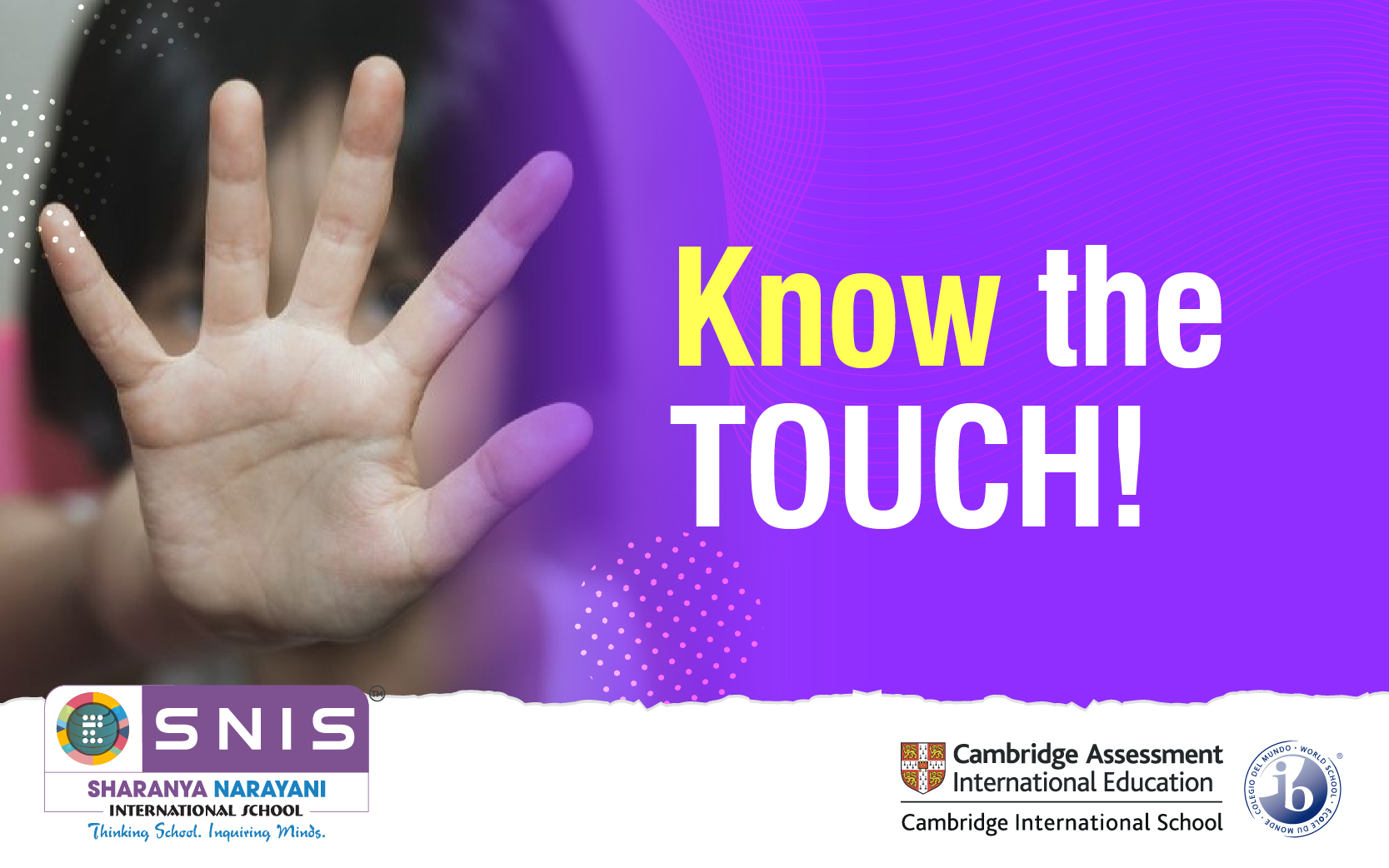
25 Mar Know the Touch!
Have you ever experienced a touch that made you feel uncomfortable and kept it a secret? Do you know the difference between safe and unsafe touch? I am sure that most of us might have faced unsafe touch irrespective of our gender.
“The true character of a society is revealed in how it treats its children”. ~ Nelson Mandela
Safe and Unsafe Touch!
Safe touch is a touch that makes you feel comfortable and happy. Unsafe touch is a touch that makes you feel uncomfortable and scared. Remember, your body is yours. Nobody has the right to harm you. You must decide who can and cannot touch you.
Our children must be educated about safe and unsafe touches. At Sharanya Narayani International School, one of the top international schools in Bangalore, sessions on Safe and Unsafe touches for students are taken multiple times every year. These sessions help the children to be aware of their bodies and how they change as they grow; they also learn the difference between safe and unsafe touch; how to respond when experiencing an unsafe touch and whom to report it to.
Here is an example on how child safety can be taught with an activity. At SNIS, for the students of grades one, two and three an activity was conducted where the child can differentiate between the different types of people around them. For example, people in the safe zone would be family members, and people in the unsafe zone would be strangers; friends and relatives will fall in between. The activity will also tell them about their personal space and who can be allowed into their personal space.
Unsafe touches can be –
- When someone touches you and tells you to keep it a secret.
- Touching private parts is an unsafe touch
- When you feel uncomfortable with someone’s touch
First comes first!
Teach your child the four main private zones in their bodies. The lips, chest, buttocks and the area between the legs. Apart from this, there are also unwanted and uncomfortable touches. The unwanted touches can be on the stomach, face, back or any part of the body where the child feels uncomfortable.
Safety Rules-
Teach your children the child safety rules. Some of them are mentioned below –
- Do not open doors to strangers
- Do not eat anything offered by a stranger
- Do not go anywhere with a stranger
- Always go in a group or walk in a crowd.
- Always tell a trusted adult where you are going and who you are with.
- Report to your teacher or any adult whom you trust when you notice anyone suspicious
- If someone touches your private parts, inform your teacher or parent immediately
- Trust your feelings, if it feels wrong, get away.
- If someone touches you inappropriately or threatens you, shout NO and RUN to a safe place. Shouting or yelling is a great way to get attention in an unsafe situation
Unsafe situation – Identified!
Abusers may be –
- Trusted adult
- Family member
- Another youth
Abuse might happen –
- In person
- Internet
- Social media
Some of the simple and best ways to teach safe and unsafe touch.
- It is important to teach your children the correct vocabulary for their body parts, in order for them to tell clearly which part of their body was touched inappropriately.
- If your child is 8 years and above then buy a book on safe and unsafe touch, they could self-learn and familiarise themselves.
- Use a doll or a big cut out of a human body, explain the different body parts, and mention that private parts have to be kept private. Also, tell them that they are the owner of their body and nobody has the right to abuse it.
- Kids could also be taught about taking care of their private parts while giving a bath.
- There are many YouTube videos on safe and unsafe touch. Choose the right videos and make them watch. Then you can summarise and ask them questions to check their knowledge.
- Attend a workshop on child safety along with your child. This will also give awareness on unsafe touches.
Children need to be taught to speak up and be safe. It’s okay to ask for help to keep themselves and others safe. Two third of the children who are abused, keep it to themselves out of fear and shame. Only talking about it and asking them if everything is ok regularly will give them the confidence to speak up when they are in trouble.
Child safety helpline number in India is 1098. Abuse is NEVER the child’s fault.
“There is nothing more precious to a parent than a child, and nothing more important to our future than the safety of all our children” – William J Clinton,
Sangeetha P
Student Counsellor



Sorry, the comment form is closed at this time.